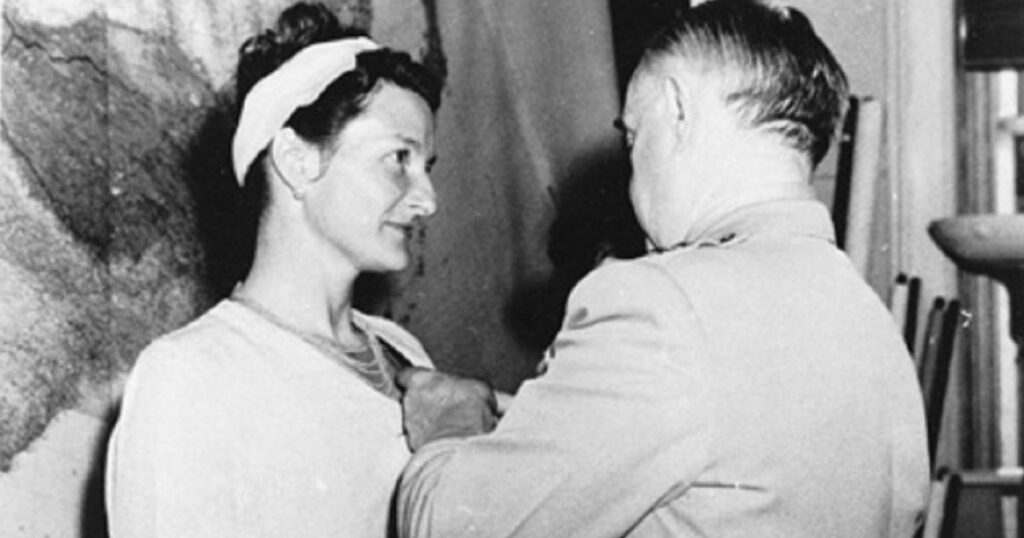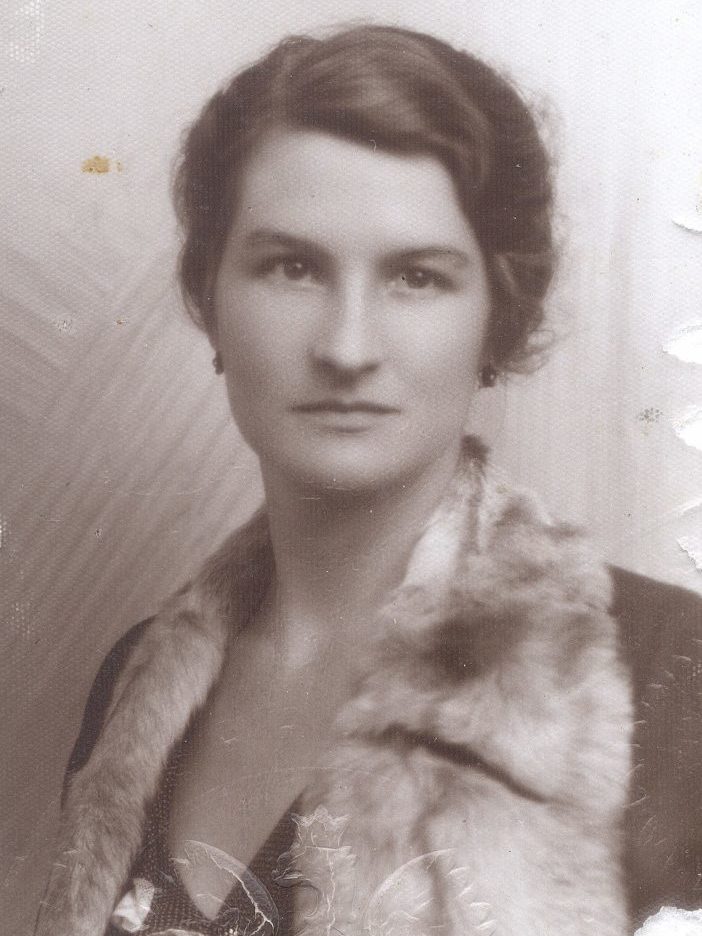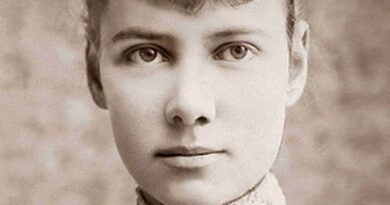
Virginia Hall: The “limping Lady” Who Was a Master Spy
Virginia Hall Goillot (née Hall), born April 6, 1906, in Baltimore, Maryland, was one of WWII’s most daring espionage operatives.
Working with Britain’s Special Operations Executive (SOE) and America’s Office of Strategic Services (OSS), she carried out intelligence, sabotage, and resistance-coordination behind Nazi lines in occupied France.
She was known by many names and codenames: Marie Monin, Diane, “La Dame Qui Boite” (The Limping Lady), even “Nicolas.” Despite having a prosthetic leg, she evaded capture, helped organize resistance networks, and played a critical role in the Allied victory.
This article explores her early life, her entry into espionage, her contributions during WWII, her postwar career, and the legacy she left behind.
Early Life & Education
Virginia Hall grew up in a privileged household in Maryland, but she had restless ambition from a young age. She attended Roland Park School (near Baltimore) and later studied at Barnard, Radcliffe, and in Europe, including the Consular Academy in Vienna. She became fluent in multiple languages (French, German, Italian) and developed a strong interest in diplomacy and international affairs.
However, at age 27, Hall suffered a hunting accident in Turkey that badly injured her left leg. It was amputated below the knee. She thereafter used a wooden prosthetic, which she affectionately named Cuthbert. This injury would shape much of her future and the way others perceived her, but it never diminished her determination.
Hall aspired to join the U.S. Foreign Service, but was repeatedly turned away. First for being a woman, then after the accident for her disability.
From Ambulance Driver to Spy
When WWII broke out, Hall volunteered as an ambulance driver for the French army. After France fell to Nazi Germany, Hall made her way to London. It was there that she was recruited by the SOE in 1941. Her linguistic skills, resourcefulness, and courage made her an ideal candidate. SOE trained her in weapons, communications, security, and resistance activities.
In August 1941, under the cover of a reporter for the New York Post, she became one of the first female SOE agents to live and act in Vichy France. She established a resistance network named Heckler, based in Lyon, that handled safe houses, transmitted intelligence, helped downed Allied airmen escape, and organized sabotage operations. All while avoiding the Gestapo, French collaborators, and other dangers.
Despite her physical disability and the constant threat of betrayal, Hall used disguises, quick thinking, and deep knowledge of regional geography and politics to remain free. One famous escape involved fleeing via the Pyrenees into Spain when her identity was at grave risk.
As her guide led her across the frozen landscape in mid-winter, she transmitted a message to SOE headquarters in London saying she was having trouble with “Cuthberg.
The SEO who didn’t know she was referring to her prosthetic leg replied: “If Cuthbert is giving you difficulty, have him eliminated.”

SOE to OSS: Return & D-Day Preparations
By late 1942, after the German occupation of Vichy France intensified, Hall’s SOE network was compromised. She escaped but was initially considered too exposed to return. However, in March 1944, she joined the OSS branch of operations and returned to France.
Under her codename Diane, she took up clandestine duties: operating wireless communications, training and coordinating with French resistance fighters (Maquis), mapping drop zones for weapons and supplies, and helping plan sabotage efforts in advance of the Allied invasion.
Her efforts were vital in disrupting German supply lines and defences, especially in regions like Haute-Loire. As D-Day (June 6, 1944) drew near, she helped organize and support operations that hampered German capacity to respond to the invasion.
Recognition & Heroism
Virginia Hall’s bravery and success did not go unnoticed, though much of it remained classified for years. She received several high honours:
- The Distinguished Service Cross from the United States in 1945 (the only civilian woman in WWII to receive this high courage award).
- She was made a Member of the Order of the British Empire (MBE) by the UK.
- She was awarded the Croix de Guerre with palm by France.
Even with all these accolades, Hall’s own modesty and the secret nature of her work kept her out of the limelight. She rarely spoke publicly of her missions.
“Miss Hall displayed rare courage, perseverance and ingenuity; her efforts contributed materially to the successful operations of the Resistance Forces in support of the Allied Expeditionary Forces in the liberation of France.”
– President Harry Truman
You can watch a short 2-minute video from the CIA museum about Virginia Hall’s history with the CIA below:
Postwar Career & Challenges
After WWII, Hall didn’t retire. She joined the newly formed Central Intelligence Agency (CIA) in 1947 and worked there until her mandatory retirement at the age og 66 in 1966. She continued in clandestine roles, often focusing on resistance support and intelligence gathering during early Cold War tensions.
Despite her wartime heroism, Hall faced institutional bias—gender and disability prejudices lingered. She was often passed over for promotion, and recognition for her achievements was slow in coming. It’s only in recent decades that full accounts of her work have been more widely published and celebrated.
Virginia Hall died on July 8, 1982, in Rockville, Maryland. Her passing was quiet, but over time, her contributions gained increased acknowledgement through historical books, memorials, and honors.
The Legacy of “La Dame Qui Boite” (The Limping Lady)
Virginia Hall’s life is a powerful lesson in courage, adaptability, and perseverance. Her achievements remain instructive for spycraft, leadership, and resistance movements. Some elements of her legacy:
- Pioneering Role for Women in Intelligence
At a time when women were often excluded from frontline operations, Hall broke barriers. She showed that gender and physical disability did not have to limit effectiveness in high-risk intelligence work. - Resistance Coordination & Grassroots Networks
Hall developed methods for working with local resistance fighters, safe houses, and sabotage operations that have been studied ever since. Her ability to manage complex networks under danger is admired in intelligence studies. - Stealth & Escape Under Pressure
One of her most dramatic escapes (crossing the Pyrenees under harsh conditions) illustrated both physical and psychological determination. Her use of disguise and misdirection, along with careful planning, kept her safe when many agents were caught. - Recognition Over Time
While largely unheralded during her life, posthumous honors, books, documentaries, and institutional memorials have given Hall more visibility. Her story is now used to inspire not just historical interest, but discussions of resilience, empowerment, and moral courage.
Why Virginia Hall’s Story Matters Today
- Inspiration for Overcoming Adversity: Her life shows how physical disability and social barriers can be transcended through sheer will, skill, and courage.
- Model for Modern Intelligence Work: Her methods of building local networks, using human intelligence, managing risk, and operating under deep cover are still relevant to covert operations today.
- Representation and Gender Equity: Hall’s story challenges assumptions about who can serve in the most dangerous and difficult roles. Her success helped open doors for women in intelligence and military roles.
- Historical Memory & Recognition: Understanding figures like Hall enriches our grasp of WWII, showing that victory came not just through large armies and battles, but through intelligence work, courageous individuals, and clandestine resistance.

